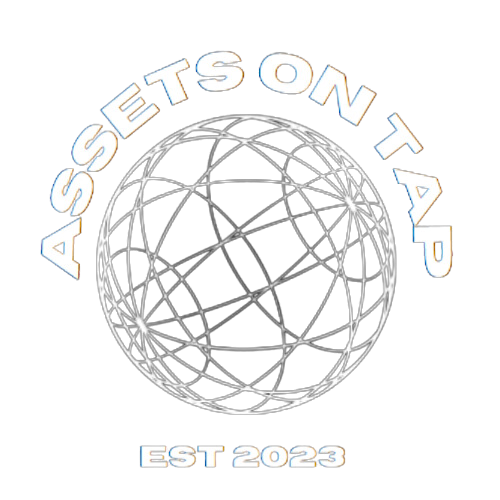Current Quality Assurance and Improvement Strategies Best at Home NCBI Bookshelf
The ISO (International Organization for Standardization) is a driving force behind QA practices and mapping the processes used to implement QA. Many companies use ISO 9000 to ensure that their quality assurance system is in place and effective. Both federal and state governments have enacted a number of laws and regulations regarding home care services. Some of the most far-reaching involve the conditions that agencies and providers must meet to become certified to participate in Medicare and Medicaid.
This often includes monitoring and evaluating customer service calls, chats, and other interactions between your employees and your customers. The QA role looks at the processes and procedures during a product’s development or manufacturing to identify and address possible problems before they happen. The idea is to find ways to improve processes and procedures in an effort to prevent defects, bugs, and other problems from being introduced into your products. If you’re confused about the difference between quality assurance (QA) and quality control (QC), you’re not alone. It’s true that QA and QC are related and each is a very important part of product development. But the two roles differ in their approaches to ensuring that your company consistently delivers quality products.
Quality Assurance (QA) in Software Testing: QA Views & Best Practices
QA has become very important to the continued delivery of quality healthcare. In 1976, the National Association for Healthcare Quality (NAHQ) was founded in the United States to equip healthcare professionals and organizations with the tools to ensure excellent quality of care. Second, all that precedes the benefit to the patient—for example, facilities, equipment, providers, support staff, and organizational policies—must be involved in a relentless, systematic, and cooperative effort to improve care.

Classically, quality assurance encompasses a full cycle of activities and systems for maintaining the quality of patient care. If the last two conditions are met (one problem solved and no new ones generated), attention turns away from that aspect of patient care to other areas or topics. Quality assurance is defined by ISO 9000 as a “part of quality management focused on providing confidence that quality requirements will be fulfilled.” With QA, manufacturers can ensure that customers receive a defect-free product by preventing mistakes at the time of manufacturing. Businesses can improve compliance to standards by monitoring processes and use feedback to improve efficiency and effectiveness. How can a business or organization follow through with true quality control and assurance with their products, processes and services, and what does it spell when they don’t?
History of ISO and QA
Then the goal is to train your team members to push through the CMMI maturity stages until you’ve developed a robust quality assurance process. The quality of products and services is a key competitive differentiator. Quality assurance helps ensure that organizations create and ship products that are clear of defects and meet the needs and expectations of customers. High-quality products result in satisfied customers, which can result in customer loyalty, repeat purchases, upsell and advocacy. QA is more focused around processes and procedures, while testing is focused on the logistics of using a product in order to find defects. QA defines the standards around testing to ensure that a product meets defined business requirements.
The advantages of a quality assurance system are pertinent to a range of industries. Quality assurance is often seen as being a box-ticking exercise, but it can be so much more when you view this process through the lens of strategic management. Technology that can help you evaluate all the data you collect and pick out the statistically relevant calls, chats, and more can not only speed up your QA process but improve it.
Beef Quality Assurance Training Nov. 2 or 7
Improving average performance, sometimes referred to as “shifting the curve,” by moving a large number of providers forward on the quality scale usually occurs only gradually. From a statistical point of view however, one can shift the curve by removing outliers from the professional community when their abnormal practices are truly extreme and constitute a significant percentage of the community’s practices. Implicit in this process of shifting the curve is the understanding that acceptable levels of quality are protected from erosion. Depending on your business maturity, your customer service team leaders may be carrying out quality assurance checks on your service staff.
When individual organizations develop idiosyncratic methods, collect data without an external reference for comparison, or fail to follow through when internal data suggest problems, valuable resources and opportunities for improvement are wasted. The time-honored principle of peer review may be difficult to implement in a small organization. A third purpose focuses on improving the average level of quality of care delivered by a community of providers.
What do quality control professionals do?
Process includes inputs (which in turn may include structural elements), actions (which may be conditioned by structural factors), and technical outputs. Avedis Donabedian has articulated what continues to serve as the unifying conceptual software development quality assurance framework for quality measurement and assurance. His widely accepted model of structure, process, and outcome has guided two decades of research and program development (Donabedian, 1966, 1980, 1982, 1984, 1988a, 1988b, 1988c).

I used the first Apple 1 in high school and waited in line for the first iPhone. The apple watch is of high manufacturing quality, very good looking, great materials, https://www.globalcloudteam.com/ great functionality, and well integrated into the iPhone. A stainless steel business watch, which I would compare to my Citizen Skyhawk, would cost over $1ooo.
The quality assurance process
The common thread is that customers whose roofs were installed within the last six months are experiencing leaks during the first rain. In this article, we will discuss the basics of Quality Assurance (QA) and its role in software testing. Quality Assurance (QA) is a common practice to ensure that the end product of any Software Development Lifecycle (SDLC) conforms to the overall and scope-agreed expectations. Starting out rewriting general news releases, Patterson has expanded to covering all areas in the reporting field and won numerous awards through HSPA. She is also the former editor of four northern Indiana Senior Life publications.
- Selenium is an open source software testing program that can run tests in a variety of popular software languages, such as C#, Java and Python.
- Since true quality assurance is about authentic, people-first attitudes and step-by-step, satisfaction-ensured org processes, any sector that deals with people in real time will, indeed, benefit from quality assurance and quality control principles.
- While it is possible to carry out quality assurance without the use of anything more than a spreadsheet, it’s not the most efficient or useful way of proceeding.
- To accomplish these goals, a successful program must be accepted by the professionals and organizations in which it is embedded or to which it is directed.
- As part of their licensing and certification duties, states conduct inspections and surveys.
- Team leaders already have one job to do, and adding more responsibilities to them is not the most efficient use of their time.
This section outlines our view of the criteria that a successful quality assurance program, either internal or external, should strive to meet (see Table 2.1). Some of these criteria may appear contradictory (such as minimal intrusion into the patient-provider relationship and ability to deal effectively with outlier providers), but the mark of a good program is an appropriate balance between such elements. We use these attributes later in this chapter to evaluate two conceptual models of quality assurance. Contrary to popular opinion, it’s not just companies that provide raw goods or tangible, physical products that need to maintain consistency and customer satisfaction.
